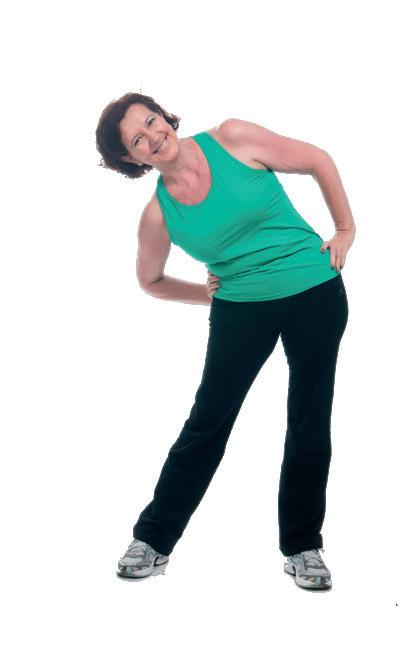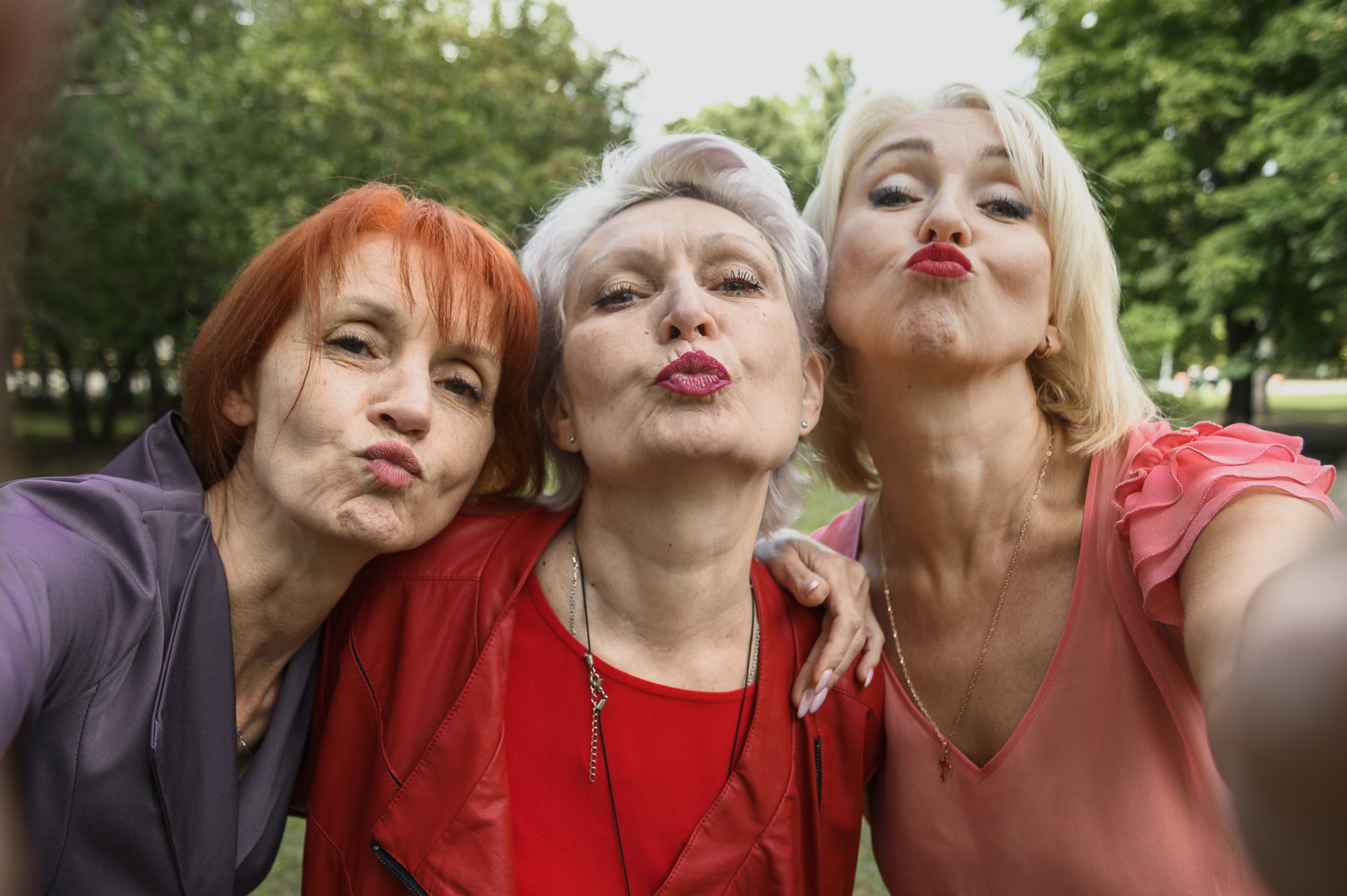
Menopause
Menopause
Menopause is a natural transition all women experience, as natural as adolescence. For your grandmother and great-grandmother, life expectancy was shorter. Reaching menopause often meant that their life was nearing an end. But this is no longer true as today women are living longer – on average, until age 78.
How you experience menopause is determined by many factors: attitude, diet, overall health, genetics, and your cultural group. Medical science views menopause as the state of your body after you have completed one full year without having a period. It is most definitely not a disease! By making wise decisions about your menopause and healthy lifestyle, you can make the most of the 20, 30, or more years afterwards!
Attitude
Many women report that they are glad to no longer have their monthly periods and all of the hormonal or just physical issues that accompanied their periods. They feel a freedom from having to be concerned about pregnancy and birth control. There is a sense of more energy, and a sense of freedom that comes without the biological drive to be mother, helper, and nurturer. Many women turn their attention to those things in life they have put aside. Some start new careers or businesses.
Others take up creative pursuits like photography or painting, while others travel to places they have wanted to see. These women have a positive attitude.
Those women who dread menopause, see it as unnatural, or a sign of old age (and we all get old don’t we!), and have more problems enjoying the transition during perimenopause. They report more symptom issues. Negative attitudes result in negative experiences.
Wake-up Call
Everything is magnified, starting in your perimenopause (the time when you begin to experience symptoms), and then continuing on as you make the transition into menopause. Issues you have not reconciled as a woman will surface for you to deal with. Perhaps long overdue lifestyle changes need to be made.
Your body is very smart and it will start to purge any “stuffed” emotions. This means the body does not want to carry these negative thought patterns or habits inside anymore.
If you have experienced trauma or hurtful experiences – the unresolved ones – they will come up. You will remember incidents you ignored or just could not deal with at the time. Maybe you did not have a safe space to work on them. This is the opportunity to let them go.
If you understand this purge and welcome it, you will experience an easier transition.
Health issues that have been neglected will also wake-up. Be sure you get thorough check-ups and tests during this time, including dental, vision, heart health, as well as hormones. Health issues are serious to me. I have walked the path of being unhealthy and the path of health. I very definitely choose being healthy. We can implement preventative health. Diet, exercise, clean water, stress management, healthy environment, and no synthetic drugs if possible go a long way in creating and keeping a healthy body.
Spiritual Awakening
You may find that the changes you are making lead you to an awakening spiritually. This happens to many women who welcome this growth. Seek out your local church, take classes in meditation, discover new spiritual thought, or a renewed connection with your God. You are a spirit with a body. Approaching your spiritual wellness includes making choices that take care of yourself physically and emotionally.
Proactive Steps
Although menopause is one of the important physical milestones in a woman’s life, many women lack concrete information about what is taking place, and what are the options. It is your right to know your body and be informed. With a proper attitude, diet, nutritional supplements, exercise, and simple lifestyle changes, most of the unpleasant side effects of menopause can be minimised to a great extent. With this knowledge and preparation you can step forward with grace and embrace it!
To make menopause fun and pleasant:
- Make choices to eliminate/reduce stress.
- Create a sanctuary space for yourself where you can meditate, write, draw, or anything that expresses your thoughts and emotions.
- Find an exercise you like and stick with it.
- Evaluate diet and reduce weight, if you have gained pounds over the years.
- Become selfish with your time for yourself. Do more things for you and evaluate caregiving roles.
- Get enough rest and sleep.
- Develop an outside interest or hobby.
- Have joy and fun in your life. If this means making new friends, go do it.
Exercises for Menopause:
Deep Abdominal Breathing
Lie flat on your back with your knees pulled up, keeping your feet slightly apart. Inhale deeply through the nose, allowing your stomach to relax. Your stomach should balloon out as you breathe in. Imagine that your body is filling with energy on each inhalation. As you exhale, imagine the air being pushed out from the bottom of your lungs to the top. This breathing will promote deep relaxation, abundant energy, and stress control.

Joint Flexibility
Improving range of motion and flexibility in all joints will remedy stiffness and soreness that are so common as women reach menopause. With the exception of the last one, the following exercises are done in sequence sitting on the floor, legs stretched out in front.
Toes – Place your hands at your sides and flex your toes 10 times.
Ankles – Rotate your ankles in each direction 10 times, keeping heels on the floor.
Knees – Bend the right leg and bring the heel near your buttock. Then lift the right leg off the floor and straighten the right knee, repeating 10 times. Then the left leg and knee 10 times. Next, holding your thigh near your body, rotate your lower leg as you did your ankle, 10 times clockwise and 10 times counter clockwise.

Hips – Bend the left leg and place your left foot on your right thigh. Hold the left knee with the left hand, and the left ankle with the right hand. Gently move the knee up and down with the left hand; then repeat with the right leg. Now rotate the left knee clockwise 10 times then counter clockwise 10 times. This improves hip flexibility. Repeat with the right knee. Also, for hip flexibility, bring the soles of the feet together, bringing the heels close to the body. Using your hands, press your knees to the floor and let them come up again. Repeat 10 times.
Fingers – Lift your arms to shoulder height. Keeping your arms straight open the hands wide. Flex your fingers, closing over your thumbs. Repeat 10 times. Wrists – Flex and extend the wrists, repeating 10 times. Rotate your wrists clockwise and counter clockwise 10 times each. Now hold the hand in extension and move it from side to side at the wrist. Repeat 10 times.
Elbows – Stretch out the arms at shoulder height with palms facing upward. Bend the arms at the elbow and touch the shoulders with your fingers; then straighten out the arms again. Repeat 10 times with arms front, then with arms extended sideways.

Shoulders – With arms bent and fingertips touching your shoulders, make circular motions with the elbows. Repeat 10 times clockwise and 10 times counter clockwise. With legs straight out in front, reach over and touch your legs without bending your knees. Repeat 20 times.
Waist – Stand up and slowly reach over and touch your toes, bending from the waist. Try to keep your knees straight. Repeat 10 times. Remain standing and spread your legs about 2 feet apart. Bend to the side at the waist first to the left, reaching your right arm over your head, repeating 5 times. Then repeat, bending to the right with your left arm over your head.
Dr. Loretta Lanphier, ND, CN, HHP is a Doctor of Naturopath, Clinical Nutritionist and Holistic Health Practitioner and Founder/CEO of Oasis Advanced Wellness. She is also Editor of the worldwide E-newsletter Advanced Health & Wellness, which can be found on www.oasisadvancedwellness.com
Menopause in the Workplace
Women make up nearly half the working population in Northern Ireland and with the recent change in pension age, it is likely that more women will be working into later life. This changing demography, together with employers duty of care to their employees and a greater openness in the discussing the difficulties faced by those experiencing menopausal symptoms, helps explain why employers should ensure that they have the appropriate policies place.
For more information you can download ‘Promoting Equality in Employment for Women Affected by Menopause’.






